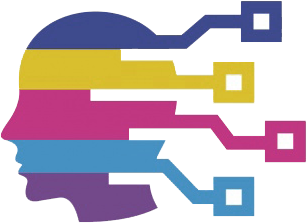The recent signing of the Take It Down Act by US President Donald Trump marks a significant step towards addressing the pervasive issue of nonconsensual intimate visual depictions on the internet. This legislation, which mandates that online platforms remove such content within a 48-hour window after receiving a request, signifies a shift in how digital rights and responsibilities are regulated. Notably, this act has garnered support from major technology companies like Google, Meta, and Microsoft, indicating a potential alignment between legislative action and corporate responsibility. However, the nuances of this law reveal both commendable intentions and potential pitfalls that demand scrutiny.
Instant Removal: A Double-Edged Sword
The 48-hour removal requirement establishes a stringent timeline for tech companies, aiming to combat the rapid spread of harmful content online. This urgency is understandable given the alarming instances where nonconsensual images circulate at lightning speed, leaving individuals in distress. For example, Microsoft faced backlash after taking months to address a high-profile incident, illustrating how delays can exacerbate victims’ suffering. However, while the intent is to protect victims swiftly, critics argue that this expedited process may invite hasty decisions that undermine free speech. The call for urgency must be balanced with the necessity for due diligence to prevent unjust censorship.
The Dark Side of Regulation: Risks of Misuse
While the Take It Down Act seeks to eliminate nonconsensual content, its lack of robust protections against abuse raises significant concerns. The law closely mirrors the Digital Millennium Copyright Act (DMCA), which has faced criticism for being exploited by individuals seeking to suppress competitors or silence dissenters through fraudulent takedowns. By encompassing a wide range of “intimate visual depictions” without clear delineations, the Act may offer a new playground for bad actors who can use the law to manipulate platforms into removing contentious content under the guise of protecting privacy. Without stringent penalties for those acting in bad faith, the potential for abuse looms large.
Free Speech Concerns: An Overreach?
Free speech advocates are rightly concerned about the implications of the Take It Down Act. The premise that users must act in “good faith” when making takedown requests introduces a level of subjectivity that could be heavily exploited. The absence of a defined appeals process for individuals wrongly accused or subjected to false takedowns only compounds the risk of silencing legitimate voices and dissenting opinions. A law that aims to protect victims could inadvertently stifle free expression, a fundamental principle in a democratic society. It is critical that the definitions and processes included in such legislation provide a fair and balanced approach to all involved parties.
International Perspectives: A Global Challenge
The Take It Down Act is not an isolated initiative; similar regulations have been adopted in other countries such as India, reflecting a global recognition of the urgency to address nonconsensual imagery. However, these international parallels highlight the need for harmonization in addressing such digital challenges. The risk of divergent standards across borders could lead to confusion and varying degrees of enforcement, complicating how platforms navigate their responsibilities. Adopting a collaborative international framework could yield best practices that address both the urgency of content removal and the safeguarding of free speech rights.
The implementation of the Take It Down Act offers an opportunity to engage in a broader conversation about how we balance the imperative of protecting individual rights while preserving the freedoms inherent to online discourse. As technology evolves and challenges become more complex, policymakers must remain vigilant in crafting laws that do not compromise the very values they seek to uphold. The path forward will require cooperation among stakeholders to ensure that rapid response does not come at the cost of justice and integrity in our digital interactions.

